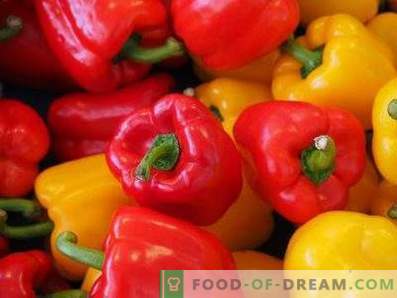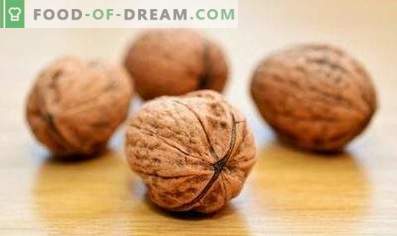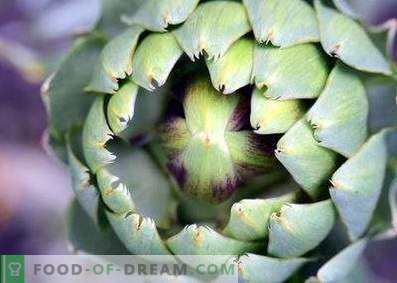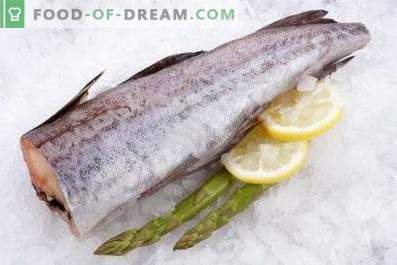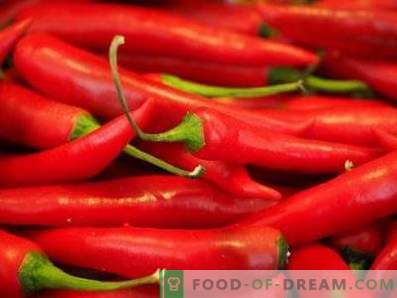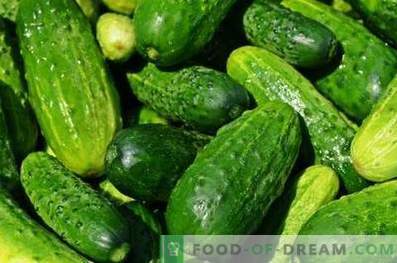
Cucumber is a vegetable crop belonging to the Pumpkin family. Homeland of this plant - India. In the subtropical and tropical forests that grow at the foot of the Himalayas, you can still find wild cucumber lianas with small, dry and bitter fruits.
On the territory of Europe, cucumbers fell into the era of wars between Ancient Greece and Persia - about 2,500 years ago. The Greeks were the first to learn how to grow this vegetable in greenhouses and in the open field, to make pickles, medicines and cosmetics from its fruits. In France, the plant began to cultivate in the IX century, in England - in the XIV century, and in North America and in Russia - about 500 years ago.
Nowadays, cucumbers are grown in most countries of the world. The largest producers of these vegetables are China, Turkey, Iran, Russia and the United States. However, the three largest exporters of culture include completely different countries - Mexico, Spain and the Netherlands.
Most often, they eat cucumbers raw. In addition, they prepare salads, soups, snacks and pickles. Folk healers use the fruits of plants for the treatment of gastrointestinal, gynecological, dermatological diseases and other disorders in the body.
Botanical description of cucumbers
Cucumber is an annual herb with a well-developed tap root. Stem of culture - branching, lianovidny, rounded-faceted, pubescent. The length of the vine can reach 3 meters in open ground and 5 meters in the greenhouse.
On the main stem is always formed from 2 to 6 side shoots with tendrils, which serve as supports. The pubescent five-lobed leaves of the plant, sitting on long petioles, can reach 190 mm in diameter. At the same time, leaf blades in plants cultivated in a humid environment are significantly larger than those that grow in arid regions. June cucumbers are blooming with bright yellow flowers. The fruits of the plant are cylindrical berries with dense green crust, firm juicy pulp and a lot of small white seeds. The surface of the cucumber can be littered with small tubercles and spines. The size of the fruit varies greatly depending on the variety.
How to choose and store cucumbers?
Signs of quality cucumbers are:
- uniform bright green color;
- elasticity;
- characteristic pleasant aroma;
- hard stem;
- small size (up to 15 cm in length).
The purchase of vegetables, on the surface of which there are dents, cracks, wrinkles, dark or light spots, should be abandoned. Also, do not buy cucumbers with musty or other uncharacteristic smell.
Vegetables should be stored in unwashed form in a refrigerator at a temperature of from 0 to +4 ° C. In such conditions, cucumbers remain fresh for 5-7 days. In order to increase the shelf life of fruits by 1, 5-2 weeks, it is enough to wrap each of them with a paper napkin.
Nutritional Value
100 g of cucumbers contains:
- 0,744 g of proteins;
- 0, 093 g of fat;
- 2, 445 g of carbohydrates;
- 0, 997 g of fiber;
- 94, 573 g of water;
- 0.412 g of ash;
- 0, 006 g of dextrins and starch;
- 0, 089 g of organic acids.
0, 152 g of essential amino acids (arginine, lysine, valine, threonine, tyrosine, isoleucine, etc.) are present in a 100-gram serving of vegetables.
Vitamins in composition
Pulp of cucumbers - a rich source of vitamins. 100 g of vegetables contain:
- retinol equivalent, A - 9, 092 μg;
- beta-carotene - 0, 057 mg;
- thiamine, B1 - 0, 028 mg;
- riboflavin, B2 - 0, 039 mg;
- choline, B4 - 5, 722 mg;
- pantothenic acid, B5 - 0, 265 mg;
- pyridoxine, B6 - 0, 034 mg;
- folic acid, B9 - 3, 799 mkg;
- ascorbic acid, C - 9, 712 mg;
- tocopherol equivalent, E - 0, 091 mg;
- Niacin equivalent, PP - 0, 294 mg.
In addition, rare vitamins were found in cucumbers - phylloquinone (16, 379 mcg per 100 g) and biotin (0, 876 mcg per 100 g).
Calories
Cucumbers - a product with low energy value. 100 g of these vegetables (fresh, salted or pickled) contain 14, 011 kcal. The calorie content of one medium size fruit is 21, 017 kcal
Useful items
Macronutrients in 100 g of fruit:
- potassium - 140, 813 mg;
- phosphorus - 41, 312 mg;
- magnesium - 13, 299 mg;
- sodium - 7, 803 mg;
- chlorine - 24, 879 mg;
- calcium - 22, 614 mg.
Trace elements in 100 g of cucumbers:
- cobalt - 0, 933 µg;
- aluminum - 424, 571 μg;
- molybdenum - 0,981 μg;
- chromium - 5, 713 mcg;
- manganese - 0, 179 mg;
- iron - 0, 544 mg;
- selenium - 0, 287 mkg;
- zinc - 0, 218 mg;
- copper - 99, 422 mkg;
- fluorine - 16, 223 mkg;
- iodine - 2, 901 mkg.
Useful properties of cucumbers
- Cucumbers are a product with a very low energy value. Meals from these vegetables can be included in your diet by people who want to lose weight.
- The cucumber pulp contains a whole complex of vitamins. People who eat 2-3 cucumbers daily provide themselves with reliable protection against seasonal vitamin deficiencies.
- Cucumbers are a rich source of antioxidants and alkaline salts that can slow down the aging process of the body. It is proved that with regular consumption of this product reduces the risk of developing malignant tumors. Cucurbitacins that are present in the juice of bitter cucumbers, can suppress the reproduction of cancer cells.
- Substances present in the cucumber pulp and seeds accelerate the excretion of harmful cholesterol from the body, strengthen the heart muscle and vascular walls, accelerate blood circulation, normalize the heartbeat and lower blood pressure. Using this product can significantly reduce the risk of cardiac disorders.
- Easily assimilated iodine compounds, which cucumbers are rich in, help to avoid disruptions in the thyroid gland.
- Cucumber juice has diuretic properties. Due to this, it is actively used to combat the swelling of tissues. In order to get rid of edema, it is enough to drink 1/2 cup of this drink three times a day.
- When eating cucumber dishes, a large amount of dietary fiber enters the body. Due to this, intestinal peristalsis is activated, the excretion of excess fluid, poisons, toxins, slags, salts of heavy metals, radionuclides and other harmful compounds is accelerated.
- Cucumber pulp has light laxative properties. Folk healers use mashed potatoes made from it to combat chronic constipation.
- Regular consumption of cucumbers helps to speed up metabolic processes in the body, improve the absorption of protein foods.
- Substances present in the cucumber pulp, prevent the deposition of salts in the joints.
- Cucumbers are rich in B-group vitamins. Dishes from these vegetables help to get rid of irritability, sudden mood swings, and seasonal depression. With their help, you can minimize the harmful effects of stress on the body, to establish the work of the nervous system. With regular consumption of cucumber pulp, sleep noticeably improves, manifestations of somnambulism disappear.
- Fresh cucumber juice has choleretic properties.
- Vitamin C and other beneficial nutrients that enter the digestive tract when eating cucumbers help maintain the health of the immune system. People who eat at least one cucumber a day are less likely to suffer from colds, parasitic and infectious diseases.
- Cucumber juice is good for drinking with a lingering, unproductive cough. This drink improves the discharge of sputum, reduces inflammation in diseases of the upper respiratory tract, eliminates hoarseness in the voice.
- Cucumbers contain substances that accelerate the production of blood cells, improve blood composition. Traditional healers recommend that people suffering from anemia, daily drink a glass of beverage made from cucumber, tomato and apple juice. The ingredients for the preparation of the healing mixture should be taken in equal proportions.
- Cucumbers are rich in nutrients that have a beneficial effect on the work of the female reproductive system. These vegetables help to reduce the unpleasant symptoms of premenstrual syndrome and menopause, reduce the risk of inflammatory gynecological diseases, increase the likelihood of conception in women of middle age.
- Fresh cucumbers can reduce the amount of sugar in the blood. Therefore, this vegetable is useful for people suffering from diabetes.
- Cucumbers with bitterness is an effective remedy for burns. In order to reduce pain, burning and accelerate the healing of a burn wound, it is enough to apply to the affected area the peel, cut off from the bitter fruit.
- Cucumber juice contains a complex of compounds that increase the overall tone of the body. The use of this drink improves memory, increases efficiency and physical endurance.
Application of cucumbers in cosmetology
- Cucumber juice is an effective remedy for skin whitening. In order to get rid of unwanted pigmentation, it is enough to wipe problem areas of the body twice with a cotton pad soaked with this tool.
- Masks of cucumber pulp help to moisturize dry skin and provide it with all the necessary nutrients. It is necessary to grate a half of a cucumber on a grater and combine the resulting gruel with fat sour cream (1: 1), a means to put on the face and leave for 15 minutes. The procedure is carried out twice a week.
- With the help of cucumber juice you can get rid of acne and pimples. To do this, rub a half of the cucumber on a fine grater, squeeze out the released liquid and connect it with 1 tbsp. spoon of medical alcohol. The resulting lotion wipe problem skin twice a day.
- Cucumbers help eliminate violations of the sweat glands. It is necessary to mix freshly squeezed cucumber juice with whipped protein (1: 1) and process the problem zone daily with the composition obtained.
- From fresh cucumbers, you can make a mask that strengthens the hair and prevents their pathological loss, adding shine and strength to the curls, accelerating the growth of the strands. To do this, grate a small cucumber without peel, add to it 3 tbsp. spoons of olive oil and beaten chicken egg. The resulting mass is thoroughly mixed, spread over the hair and leave for 25 minutes. The procedure is sufficient to hold every 2 weeks.
- Cucumbers help to cope with dark circles and swelling under the eyes. The problem can be solved by putting thin slices on the eye socket for 20-25 minutes. During the procedure you need to be in the supine position.
- Cucumber pulp can be used to prepare a rejuvenating mask. Half a small cucumber, peeled, you need to grate and mix the mashed potatoes with 4 tbsp. spoons of white clay. Mass distribute the problem area and leave for 35 minutes. Repeat the procedure every 8 days.
Contraindications and harm
- Fresh cucumbers can not be eaten with acute renal failure, with nephritis and kidney stones. In addition, these vegetables are contraindicated in the exacerbation of gastritis, colitis, peptic ulcer and enterocolitis.
- Salted and pickled cucumbers are harmful for people suffering from obesity, pyelonephritis, neuritis, acute gastritis, cholecystitis, hepatitis and bile duct dyskinesia.
- Cucumber abuse can cause diarrhea, bloating, flatulence.
- Cucumbers that have been grown using artificial stimulants and pesticides can harm the human body. Eating the fruits of these plants leads to dangerous poisoning, impaired liver function, digestive tract and kidneys.
- Cucumbers cannot be eaten in case of diseases and conditions accompanied by excessive alkalization of the body (for example, with abundant prolonged vomiting or certain metabolic pathologies, with prolonged use of diuretic drugs).
- Nutritionists recommend that women stop eating cucumbers during breastfeeding. Failure to follow this recommendation may result in impaired stool in infants or the development of intestinal colic.


